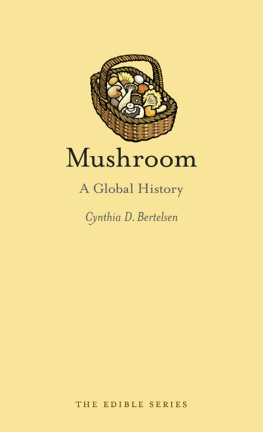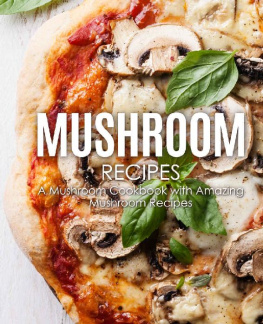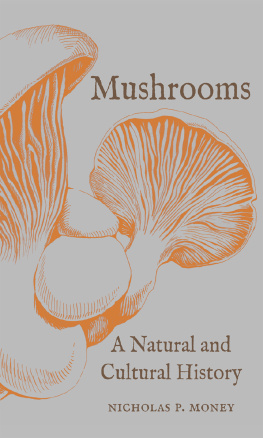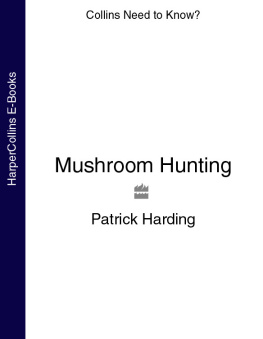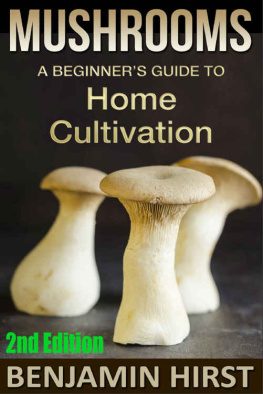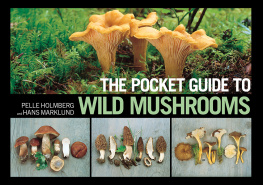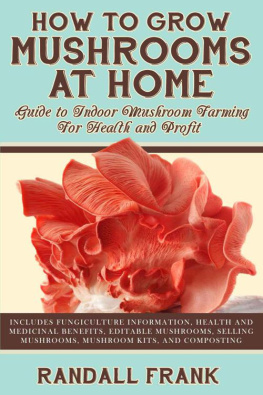Copyright Cynthia D. Bertelsen 2013
Introduction:
The Importance of Being Mushroom

On the contrary, it [the mushroom] is a human subject. Many are the quaint fantasies which have been interwoven by man into its lore, and thus its history is almost his history. It starts with Adam and Eve, and it will continue after the ultimate man has looked his last on a dying world. It embraces not only our first ancestors, but such diverse characters as Judas Iscariot and the devil, Pliny and Erasmus Darwin, the fairies and witches, and Baron Munchausen and Sir John Mandeville.
R. T. Rolfe and F. W. Rolfe, Romance of the Fungus World (1925)
The French philosopher Voltaire (16941778) once quipped, A dish of mushrooms changed the destiny of Europe. He was referring to the repercussions stemming from the death of the Habsburg king Charles VI, who ate death cap mushrooms (Amanita phalloides). The subsequent War of the Austrian Succes sion (174048), which developed into a global war (in the American colonies it was called King Georges War), absorbing in the process the War of Jenkins Ear between the British and Spanish in the Caribbean, affected people as far away as India. All because of mushrooms: those toadstools.
The history of the mushroom is quite a tale; one ringing with murder and accidental death, hunger and gluttony, sickness and health, religion and war. It is a story filled with theories and literature, and tinged with mystery and magic. Writers, poets and artists have ascribed to mushrooms the very messiness and rottenness of life itself. For a long time people either loved or loathed them. Now, mushrooms embody the ideal of local-foods thrift and a renewed back-to-the-land movement.

Ceps, also known as porcini, in a French market.
The taint of poisoning permeates mushroom lore and history, but this is not the only reason for their bad reputation within certain cultures. Several interesting trajectories weave through this saga. The patterns of mushroom consumption in many regions of the world suggest that a deep divide existed between people when it came to eating the fungi.
The eighteenth-century mycologist William Delisle Hay commented on the fungiphobia of his fellow Englishmen, who considered most mushrooms to be poisonous toadstools, regardless of their actual edibility. Well-respected mycophilic amateur R. Gordon Wasson (18981986) took Hays concept and coined the terms mycophobic and myco philic to describe cultures that either loved or loathed fungi. These terms predominate in the literature of modern mycology the study of fungi. In the West, a rather Manichaean mindset predominated: people were either mycophilic (mushroom-loving) or mycophobic (mushroom-fearing). In the East, most cultures regarded mushrooms through a mycophilic lens.
West and East are now meeting, thanks in part to French haute cuisine and the demand it generated for mushrooms. Entrepreneurs worldwide are now jumping on the band-wagon and pushing mushroom cultivation, regardless of climate and geography. Long cultivated and revered in the East, wild mushrooms now turn up in many a kitchen in the West.
Early woodblock print of mushrooms from the early German herbal Ortus sanitatis (1471). | 
|

Agaricus species, showing size differences and gills.
Its hard to imagine another form of earthly life that has affected human beings as much as the kingdom Fungi. Seek ing the taste and perceived medicinal benefits of mushrooms, human beings followed a path from superstition to science, from foraging to farming, from medieval old wives tales to modern clinical trials, and from food eaten to ward off starva tion to haute cuisine. In other words, the three Cs cuisine, cultivation and canning in large measure drove the twentieth-century shift from mycophobia to mycophilia, at least in the West.
In recent decades there has been a growing awareness of the vital role that mushrooms and other fungi can play in the lives of humans, meaning that the story of the mushroom has just begun, in spite of its ancient origins. In the developed world, many species of mushroom are still considered specialty foods, linked in part to the influence of French haute cuisine. In the developing world, however, mushrooms are used as provender in times of hunger and as cures for illness; they also promise a better future for poor farmers and their families, who might commercially cultivate them in order to meet world demand.
Mushrooms possess valuable medicinal qualities that can help to boost the immune system of the human body. The remarkable mind-altering effects of certain species may assist terminally ill patients by relieving anxiety at the end of their lives. And, of course, many groups of people from ancient times to the present have used these magic mushrooms for religious and spiritual purposes.

